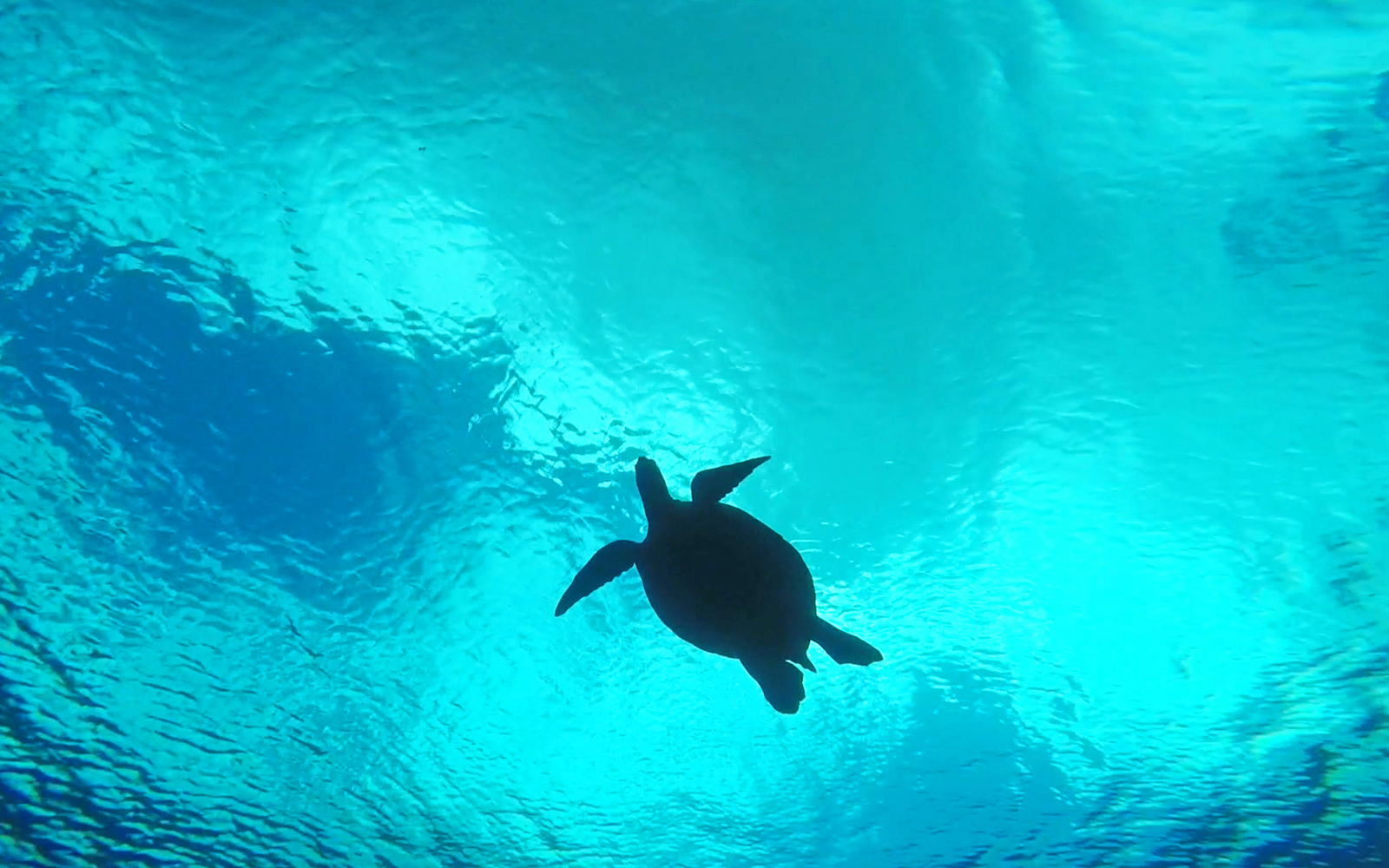
In terms of cheesy Hawaiian jokes, it doesn’t get worse than this: “If it’s your first time snorkeling with Hawaiian Green sea turtle, you’re in for honu experience.” Honu, it turns out, is the Hawaiian name for sea turtles, and all fabricated jokes aside, the experience of snorkeling with sea turtles in Maui is a peaceful aquatic moment that borders on transcendental. They float, almost effortlessly, mere feet from your face, casually surfacing to gulp some air before scurrying off toward the blue.
First-time snorkelers might be amazed at how quickly these large, 300-pound turtles can move underwater, making that moment when you spot them more rare—part of why so many people who come to Hawaii want to swim with them. Luckily, most places where you’ll be staying will have access on-site.
Popular areas for the pastime in South Maui include Wailea Point—the rocky headland immediately fronting the Four Seasons Maui. Makena Landing, or “5 Caves,” is the coastal darling of catamaran tours and early morning dive boats (check with your hotel about tours), although it’s also possible to swim from shore when conditions are nice and calm.
In West Maui, head to Pu‘u Keka‘a, or “Black Rock,” immediately in front of the Sheraton, where hungry turtles graze limu (seaweed) from rocks in the hour surrounding high tide. Honokeana Cove in Napili is another popular spot, as are Napili, Kapalua, and Honolua Bay. When snorkeling with sea turtles “up north,” however, winter months can be rough due to large northerly swells, and a general rule is if you see people surfing, you should take your snorkeling mask elsewhere.
Once you’ve launched yourself out from shore or splashed off the side of a boat, the next step is to find the spots where sea turtles usually hang out. Hawaiian Green sea turtles are federally protected and it’s illegal to touch them or ride them. Snorkelers should always keep a safe distance of at least a couple of feet, and avoid hovering in a mass above a resting turtle to give the animal an open path to surface and swim for a breath of air.
When not eating or swimming, sea turtles are usually found resting beneath an undercut rock or cave. Look for their large, brown and green shell to be juxtaposed with the rocks, or a large indent where sand meets with the edge of the colorful reef. You’ll also find them at “cleaning stations” within the reef itself, where herbivorous fish enjoy a buffet of algae off the shell.
To position yourself for that coveted “fly-by” and get that underwater shot, find a turtle that’s lying in the sand or perched on the edge of a cave. There’s a good chance you’ll find one in the moment before it decides to surface for air—and with a little bit of luck—you could end up having a whole new experience that’s your best snorkeling trip yet.
More good reads from T+L:
• Mastering the Hana Highway: How to do it Right
• In Hawaii, Snorkeling to Save Maui’s Reefs
• Best Places to Travel in 2015